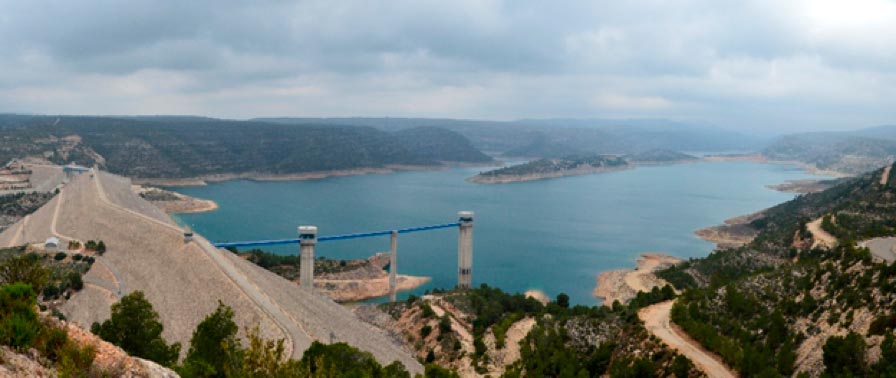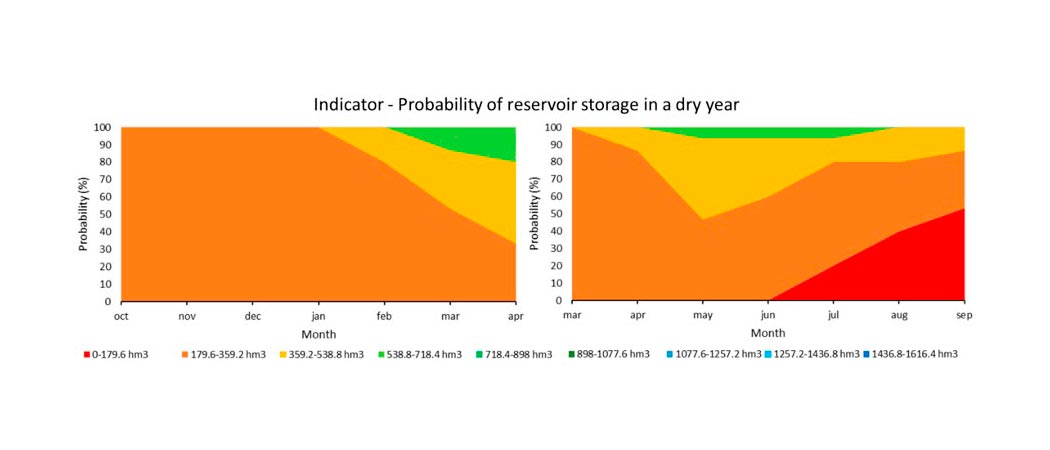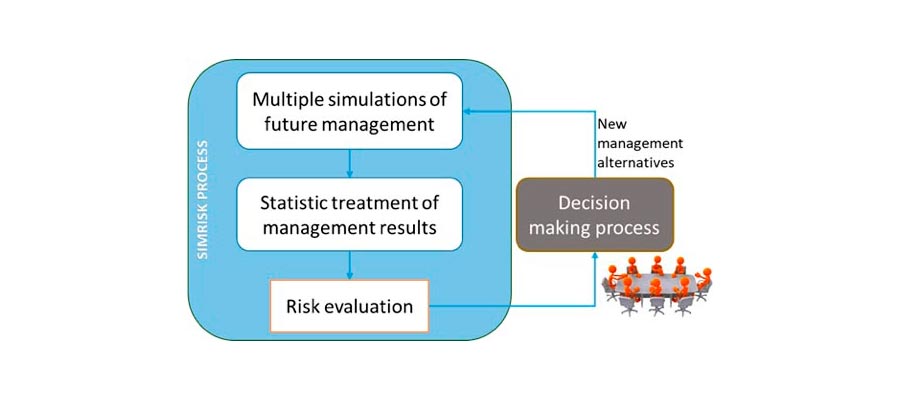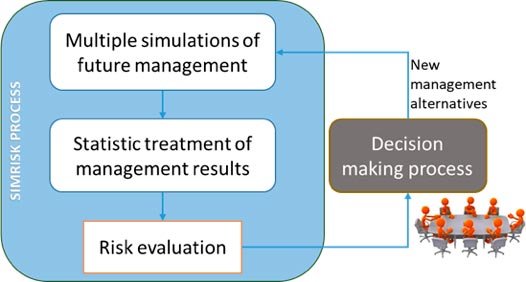
Tous reservoir located in the Valencia province (east of Spain) (Photo source: Sara Suárez-Almiñana)
The Participative Boards for Water Allocation of the Júcar River Basin Authority (Confederación Hidrográfica del Júcar – CHJ)
Flows, deficits and dammed volume forecasts for the next 6 months.
To guarantee proper water allocation for environment and different concerned stakeholders based on probabilities of deficits in water supply and water storage in reservoirs.
Seasonal forecasts are integrated in a model chain where flows are obtained and introduced in what we called the Simrisk process. It is a risk management model component of the Decision Support System where multiple scenarios of future management are simulated and the outputs (as, for instance, reservoirs volumes) are treated statistically for risk assessment. This is done throughout an indicator that informs about the probabilities of having certain volume of water storage in the system, as can be seen in next figure.
It was selected to start in October (start of the hydrological year until the beginning of the irrigation season) and March (includes the entire irrigation season) because agriculture is the main consumptive use of this basin (80%) and it may be the most affected sector by water shortages during drought events.

In the left figure it can be seen how from October to January there are 100% of probabilities of having between the 10-20% (orange) of the total reservoir capacity of the system. Then, this probability is decreasing until April, where there are about the 70% of probabilities of being between 20-50% (yellow-green) of full capacity. However, on the right figure it can be seen how these probabilities are decreasing over the summer, reaching September with about 50% of probabilities of having less than the 10% (red) of total storage capacity of the system.
If the estimated risks are acceptably low, then there is no need to undertake mitigation measures. However, if the estimated risks are unacceptably high, then some measures must be applied. In that case, alternatives with sets of measures are formulated by water managers, and the modification of risks and the efficiency of measures are assessed again within this process. This iterative procedure can be continued until an acceptable value of risk is reached and the process ends. The approach provides a complete vision of the consequences of decisions, either concerning management or infrastructure.
From the interaction with stakeholders, it became clear that they will only integrate the results in the River Basin Hydrological Plan and the Drought Management Plans in case the seasonal forecast demonstrates enough skill to reduce the uncertainty existing in the current management tools (where dynamic seasonal forecasts are not used). If not, it will only introduce a new source of uncertainty in the currently used methodologies for drought planning and management in JRB and will not be useful for the targeted end-users. Currently, the end user is not convinced of the level of skill provide by the seasonal forecasts. Thus, at this stage they do not consider integrating this information into their decision making.


